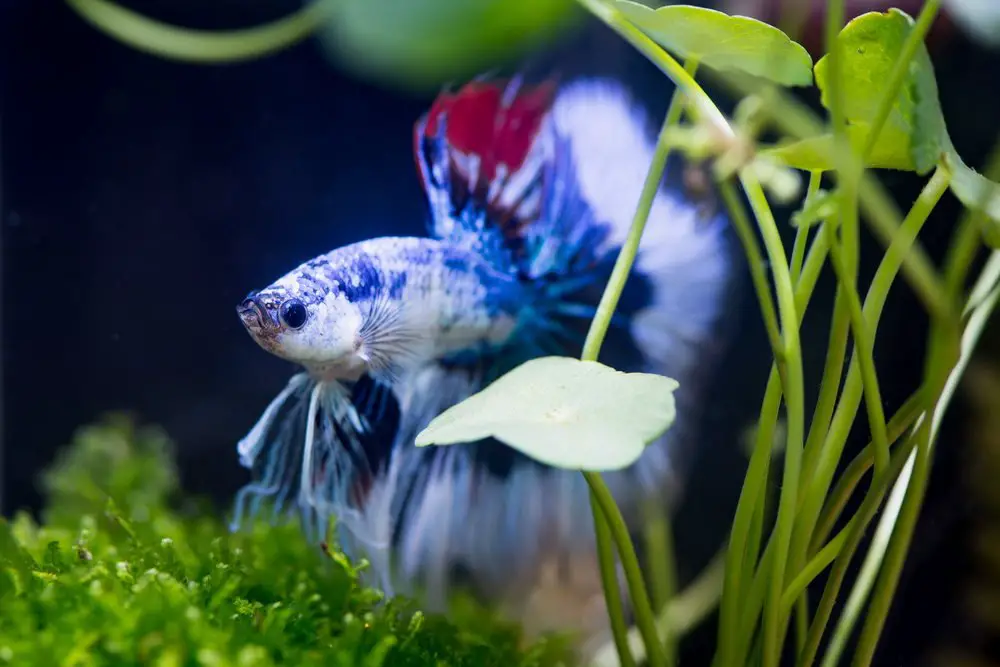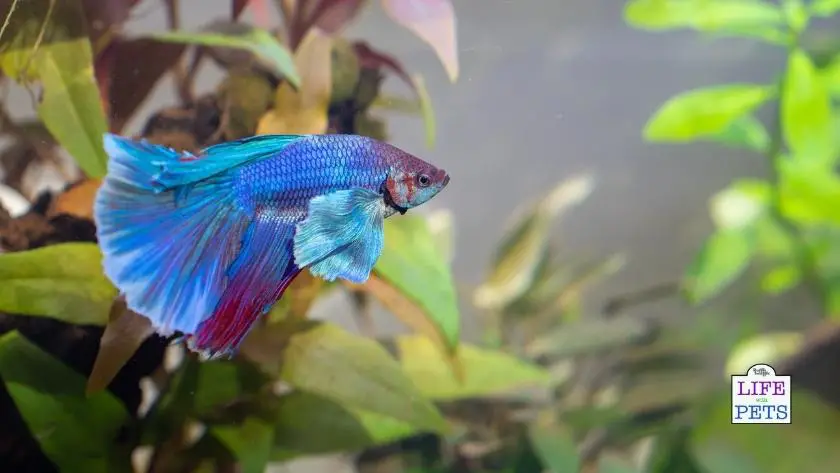Betta fish are one of the most popular aquarium fish around the world. They are known for their vibrant colors and stunning fins that add a touch of elegance to any aquascape. If you’re thinking about creating a beautiful Betta fish aquascape, there are a few tips you should keep in mind.
In this article, we will share some expert tips on how to create a stunning Betta fish aquascape that will not only enhance the beauty of your home but also provide a healthy and comfortable environment for your Betta fish to thrive in. From choosing the right tank size to selecting the perfect plants and decorations, we’ve got you covered. Let’s dive in!

Tips for Creating a Beautiful Betta Fish Aquascape
Betta fish, also known as Siamese fighting fish, are popular pets among fish enthusiasts due to their vibrant colors and unique personalities. Creating a beautiful aquascape for your betta fish not only enhances their living space, but also provides a visually pleasing addition to any room. Here are some tips for creating a stunning betta fish aquascape.
1. Choose the Right Tank Size
The first step in creating a beautiful betta fish aquascape is to choose the right tank size. Betta fish thrive in smaller tanks of at least 5 gallons, but a 10-gallon tank or larger is ideal for creating a more complex and visually appealing aquascape. The tank should also have a lid to prevent the betta fish from jumping out.
When choosing a tank, consider the location and lighting of the tank. A tank that receives natural light is ideal, but if that is not feasible, a tank light can be used to provide artificial light.
2. Select the Right Substrate
The substrate is the material that lines the bottom of the tank. Betta fish prefer a soft substrate, such as sand or gravel, that they can easily move around. Adding a substrate also provides a natural environment for beneficial bacteria to grow, which helps maintain a healthy tank.
When selecting the substrate, consider the color and texture. A natural-looking substrate, such as tan or brown sand, provides a more realistic environment for the betta fish. A colorful substrate, such as brightly colored gravel, adds a pop of color to the tank.
3. Add Plants and Decorations
Adding plants and decorations to the tank not only provides hiding places for the betta fish, but also enhances the overall look of the aquascape. Live plants, such as Java ferns or Anubias, provide oxygen and help maintain water quality. Silk or plastic plants can also be used, but should be checked regularly for any signs of wear or damage.
Decorations, such as rocks or driftwood, can be used to create caves or hiding places for the betta fish. When selecting decorations, make sure they are safe for the fish and do not have any sharp edges that could harm them.
4. Provide Proper Filtration
Proper filtration is crucial for maintaining a healthy betta fish aquascape. A filter helps remove waste and debris from the water, which helps maintain water quality. A filter that is too powerful can create strong currents that stress the betta fish, so it is important to choose a filter that is appropriate for the tank size.
5. Maintain Proper Water Parameters
Maintaining proper water parameters is essential for the health of the betta fish and the overall appearance of the aquascape. The ideal water temperature for betta fish is between 76 and 82 degrees Fahrenheit. The pH level should be between 6.5 and 7.5, and the water hardness should be between 2 and 15 dGH.
Water changes should be performed regularly, with 10-20% of the water changed every week. A water testing kit can be used to monitor the water parameters and ensure they are within the appropriate range.
6. Feed a Balanced Diet
Feeding a balanced diet is important for the health of the betta fish and the appearance of the aquascape. Betta fish are carnivorous and require a diet high in protein. High-quality betta fish pellets or frozen foods, such as bloodworms or brine shrimp, can be used to provide a balanced diet.
Overfeeding should be avoided, as it can lead to poor water quality and health problems for the betta fish. A good rule of thumb is to feed the betta fish as much as they can eat in 2-3 minutes, twice a day.
7. Avoid Overstocking
Overstocking the tank can lead to poor water quality and stress for the betta fish. A general rule is to have one betta fish per 5 gallons of water. If other fish or invertebrates are added to the tank, make sure they are compatible with the betta fish and do not overcrowd the tank.
8. Keep the Tank Clean
Keeping the tank clean is important for the health of the betta fish and the appearance of the aquascape. Regular water changes and cleaning of decorations and substrate can help maintain a healthy environment for the fish.
9. Monitor for Signs of Disease
Monitoring the betta fish for signs of disease is important for maintaining a healthy aquascape. Signs of disease include lethargy, loss of appetite, and abnormal behavior. If any signs of disease are observed, the betta fish should be isolated and treated promptly.
10. Enjoy Your Beautiful Betta Fish Aquascape
Creating a beautiful betta fish aquascape takes time and effort, but the end result is a stunning addition to any room. By following these tips, you can create a healthy and visually appealing environment for your betta fish to thrive in. Sit back, relax, and enjoy your beautiful betta fish aquascape.
Frequently Asked Questions
Here are some common questions regarding creating a beautiful Betta fish aquascape:
What are some tips for selecting the right aquarium for betta fish?
The first consideration when selecting an aquarium for betta fish is the size. A 5-gallon aquarium is perfect for one betta fish. Next, choose an aquarium with a lid to prevent the fish from jumping out. Also, consider the shape of the aquarium. Betta fish prefer tanks with a lot of surface area for air exchange, so a long, shallow aquarium is ideal.
Finally, choose an aquarium with a filter to maintain water quality. Betta fish are sensitive to poor water conditions, so a filter will help keep the water clean and healthy for the fish.
What kind of substrate should be used in a betta fish aquascape?
For a betta fish aquascape, choose a substrate that is gentle on their delicate fins. Sand or fine-grained gravel are good options. Avoid sharp rocks or rough substrates that can tear the betta fish’s fins.
It’s also important to choose a substrate that won’t affect the water chemistry. Betta fish prefer slightly acidic water with a pH of around 7.0. A substrate that alters the pH can harm the fish and affect the health of any live plants in the aquarium.
How can live plants be incorporated into a betta fish aquascape?
Live plants are a great addition to a betta fish aquascape. They provide natural hiding places for the fish and help to maintain water quality. Choose plants that are compatible with the betta fish’s preferred water conditions. Some good options include Java fern, Anubias, and Amazon sword plants.
It’s important to ensure that the plants are secured in the substrate and won’t come loose and float to the surface. Also, avoid using any plants that are toxic to betta fish such as lilies or daffodils.
What kind of lighting is needed for a betta fish aquascape?
Betta fish don’t require high-intensity lighting, but they do need a consistent light cycle. A timer can be used to ensure that the aquarium light is on for 8-10 hours per day and off for the remainder of the time. This mimics the natural light cycle and helps to maintain the betta fish’s health and behavior.
Choose a light that is appropriate for the size of the aquarium. A light that is too bright can lead to algae growth and affect water quality. A low to medium intensity light is ideal for a betta fish aquascape.
What kind of decorations can be used in a betta fish aquascape?
Betta fish enjoy having places to hide and explore. Decorations such as caves, driftwood, and rocks can provide hiding places and add interest to the aquarium. Be careful when choosing decorations, as some can be sharp and harm the betta fish. Always choose decorations specifically designed for aquariums.
It’s important to avoid overcrowding the aquarium with decorations. Betta fish need space to swim and explore. Choose a few carefully selected decorations that add interest without overwhelming the aquarium.

How to make THE BEST Betta Fish Tank | You Suck At Fish Tanks
In conclusion, creating a beautiful Betta fish aquascape can be a rewarding and enjoyable experience. By following these tips, you can create a healthy and visually stunning environment for your Betta fish to thrive in. Remember to choose the right plants and decorations, provide proper lighting and filtration, and maintain consistent water parameters. With some patience and dedication, you can create a beautiful home for your Betta fish that you can enjoy for years to come.
In addition to the aesthetic benefits, a well-designed Betta fish aquascape can also promote the health and well-being of your fish. The plants and decorations can provide hiding places and stimulation for your Betta, while the proper lighting and filtration can help maintain a healthy environment. By putting thought and care into your aquascape, you can create a space that not only looks great but also supports the health of your fish.
Ultimately, creating a beautiful Betta fish aquascape requires a balance of creativity, knowledge, and patience. By researching and experimenting with different plants, decorations, lighting, and filtration methods, you can create a unique and visually stunning environment that reflects your personal style and provides a healthy home for your Betta fish. With these tips in mind, you can start creating your own beautiful Betta fish aquascape today!
